It’s been neat to see the Airbus A350 becoming one of the most versatile aircraft of our time. Despite how much hate for it you may have had for it once you saw it starting to replace your favorite jumbo jets on long haul routes, you can’t deny that it has changed commercial aviation in more good ways than bad. And now, with the introduction of the A350F, things are about to get even better.
Don’t worry. I too felt like I got kicked right in the feels once I realized how quickly the Airbus A350F is going to dominate the air cargo industry. Arguably the most high-tech freighter ever built, it’s hard not to think that the glory days of DC-10 freighters (and even 767-300 freighters for that matter) are going to be over before we know it.
Blank side view templates of the Airbus A350F
Creating this set of side profile template for the A350 cargo variant wasn’t all that difficult since I already had templates made for every other type of A350 so far (A350-800, A350-900, and A350-1000). The difficult part was doing the research to try and figure out how the freighter differs from the passenger versions.

As you can see from the illustrations above, the A350 looks absolutely stunning in freighter configuration. It’s arguably the sleekest cargo plane in the world at the moment, and one of the best performing ones at that. And yes, I’m not afraid to go on record by saying that I think the A350F looks better than the 777F. To me, the 777 freighter looks a bit porky in comparison.
How is the Airbus A350F different from other variants of the A350?
The A350F, although based on the A350-1000, is shorter than the -1000 variant by 3 m (2.99 m to be exact). That makes it 6.99 m longer than the A350-900.
Interesting things to note about the length of the A350F:
- The aft section of the fuselage is exactly the same length as the same section of the A350-1000.
- The reduction in length over the -1000 variant comes from removing 5 sections just ahead of the wing.
- The length of fuselage forward of the wing is very similar to the A350-900.
Instead of placing the cargo door ahead of the wing (as it is with most other commercial aircraft converted to freighter use), it was placed behind the wing instead. This prevents scenarios where the aircraft could tip backwards on its main gear during the loading process.
How is the A350F different than the Boeing 777F?
The A350F weights nearly 20t less than the 777F, which allows it to carry more payload (109t vs 103.7t). That’s a lot of weight – especially considering that the A350-1000 is only capable of carrying 63t of cargo.
The A350F is 6.9 m longer than the 777F, giving it a 10% larger freighter volume.
What are the visual differences of the A350F compared to other A350 variants?
Interestingly enough, there are very few visual differences between the A350F and other versions of the A350.
The lack of windows is the most obvious difference, although there are still 3 standard-sized windows along the side of the fuselage (one behind the boarding door, one just ahead of the wing, and one just ahead of the main cargo door. In addition:
- The cargo door is the other main difference. Located just aft of the wing, it’s a fairly small cargo door – at least compared to the cargo doors on other freighters such as the 777F and DC-10F.
- Unlike other variants of the A350, the A350F has only one boarding door. The forward boarding door (the one closest to the cockpit) is all that remains.
- All other components (the wing, vertical stabilizer, horizontal stabilizer, etc) are visually identical.
- The 3-bogey main gear of the A350-1000 is used on the A350F, and looks nearly identical (though it’s safe to say that it has been reinforced for the higher payload limits). The nose gear is visually identical as well.

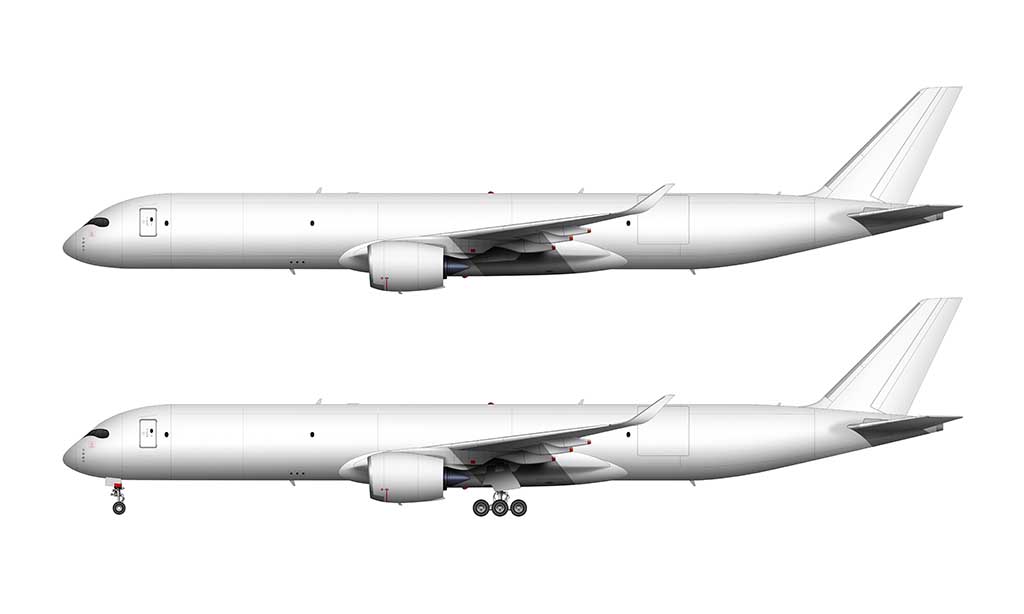
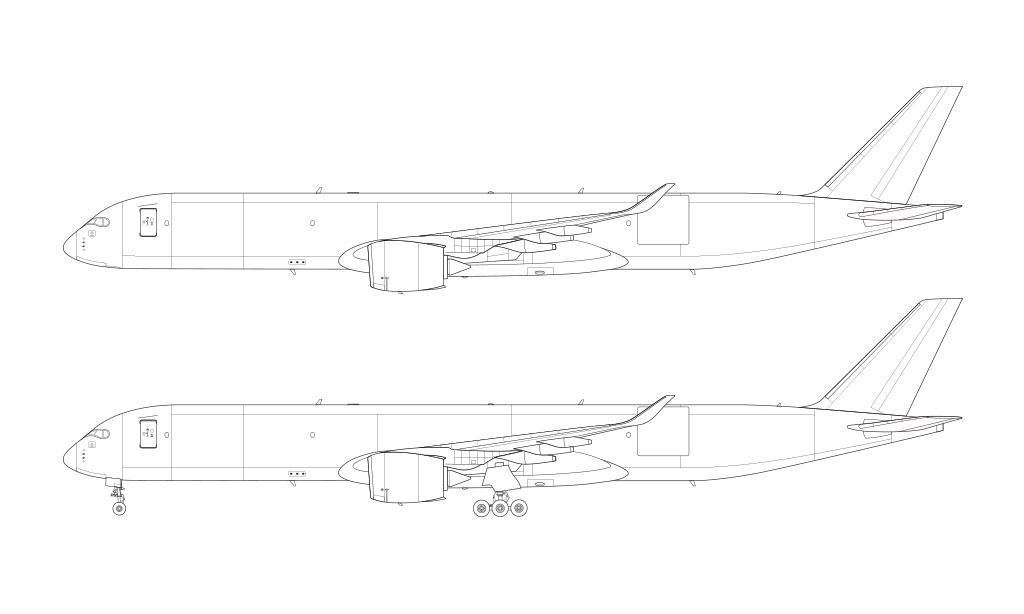
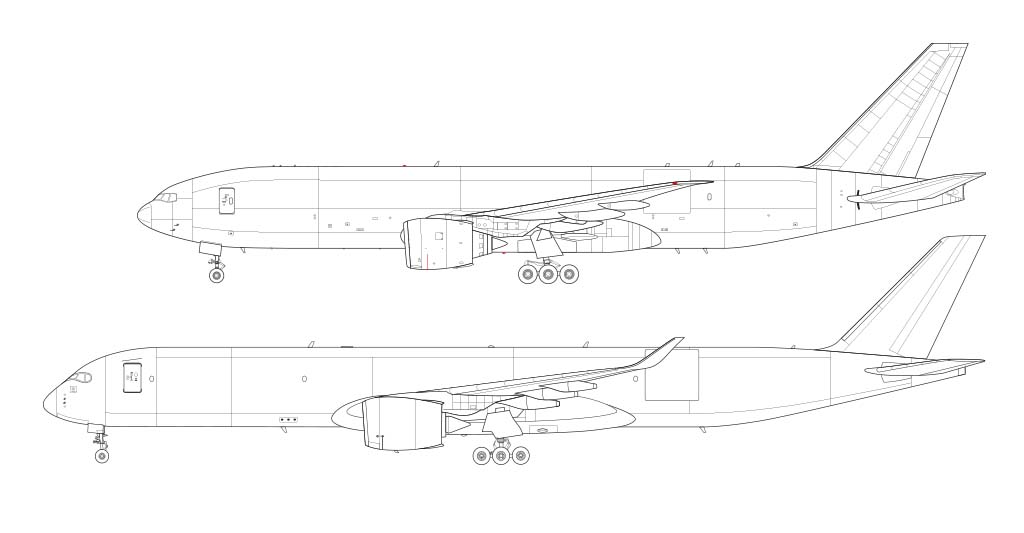
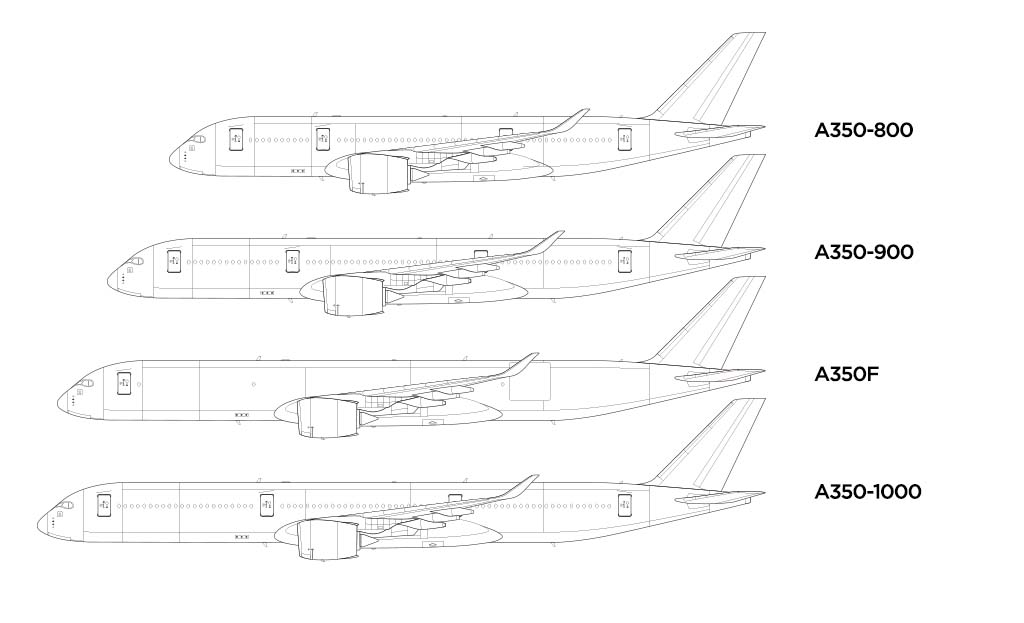
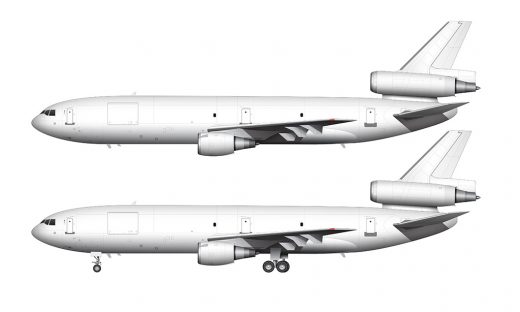
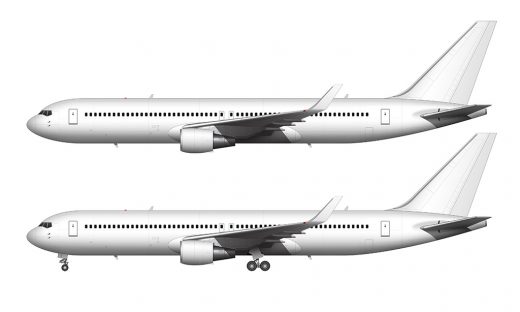
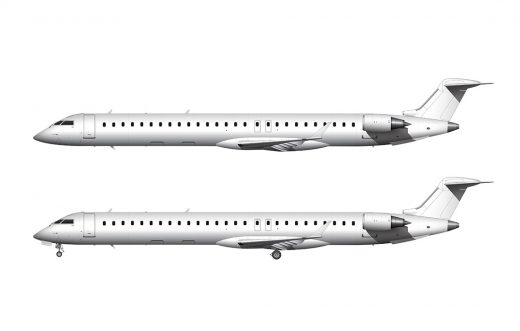
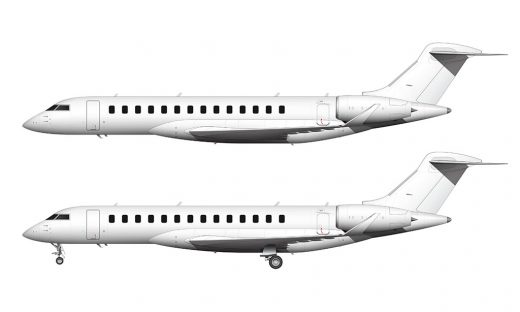
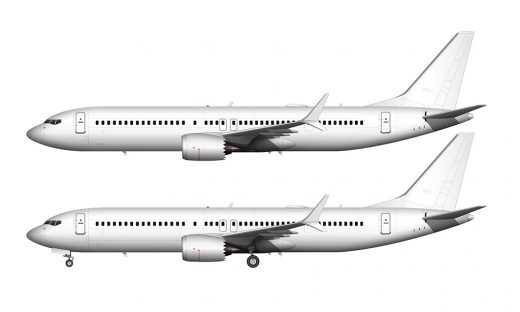
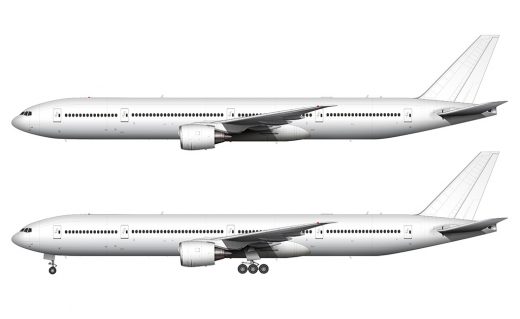
They are still producing the A350f.